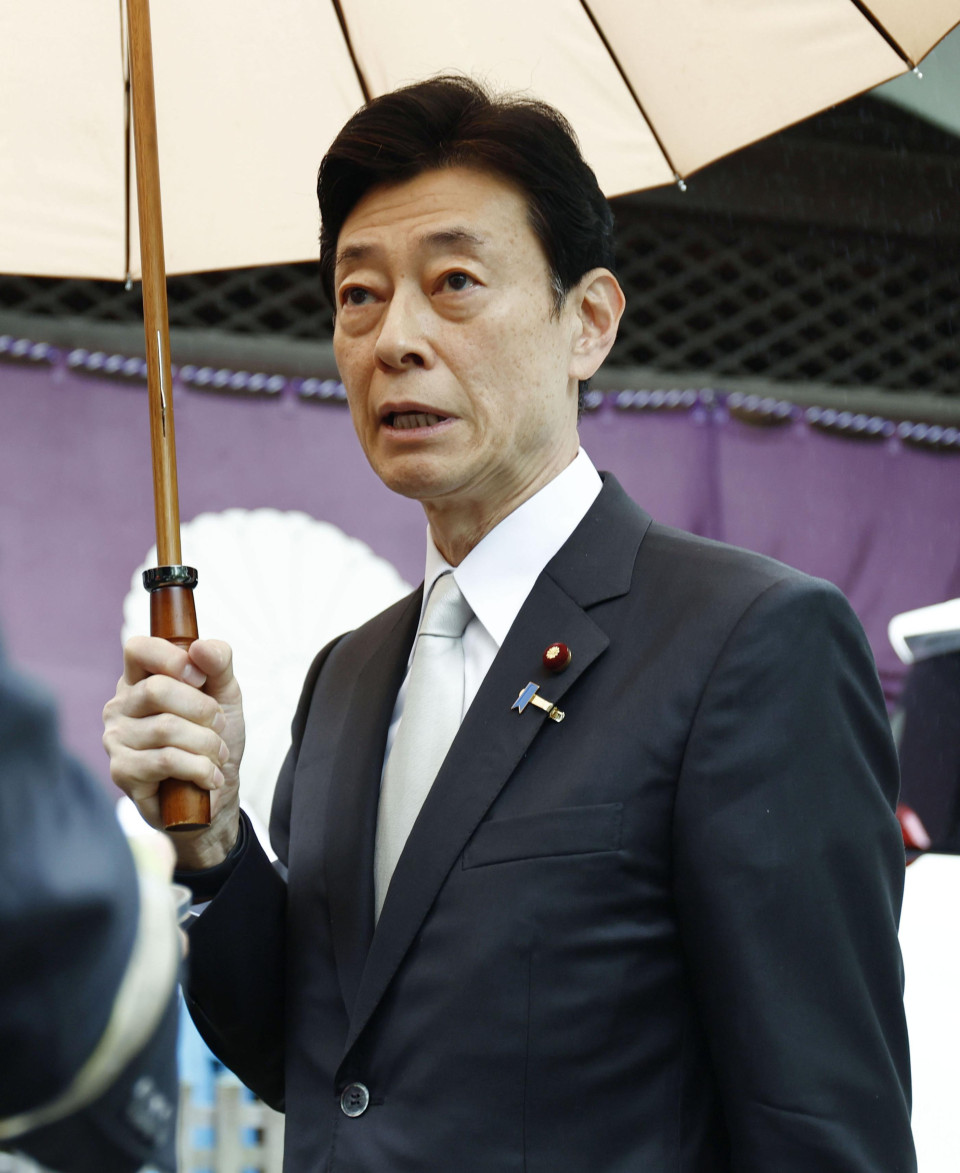None of the current members of Prime Minister Shigeru Ishiba’s Cabinet visited the war-linked Yasukuni shrine during a three-day spring festival that ended Wednesday, partly due to diplomatic considerations.
Ishiba sent a ritual “masakaki” offering to the shrine on the first day of the festival, prompting a protest from China and disappointing South Korea. The neighboring countries see the Shinto shrine as a symbol of Japan’s past militarism.
Ishiba and his Cabinet members also stayed away from the shrine, which honors convicted war criminals along with 2.4 million war dead, during last October’s autumn festival, which coincided with a House of Representatives election campaign.
Japan’s relations with China and South Korea have been thawing after years of tension over wartime history and territorial issues.

Former Japanese economy minister Yasutoshi Nishimura meets the press after offering prayers at the war-linked Yasukuni shrine in Tokyo during its three-day spring festival on April 23, 2025. (Kyodo) ==Kyodo
Past visits to the shrine by Japanese leaders, Cabinet ministers and lawmakers drew sharp rebukes from Beijing and Seoul. Japan invaded a vast swath of China before World War II and colonized the Korean Peninsula from 1910 to 1945.
Some members of the ruling Liberal Democratic Party still visited the shrine during the latest festival.
Among them are former economic security minister Sanae Takaichi and former industry minister Yasutoshi Nishimura. Both had close ties with the late Prime Minister Shinzo Abe, who visited Yasukuni as premier in 2013.
No sitting prime minister has paid a visit since then.
Yasukuni added wartime leaders, including Prime Minister Gen. Hideki Tojo, to the enshrined deities in 1978, stirring controversy at home and abroad. Tojo was executed by hanging for crimes against peace.
Related coverage:
70 lawmakers make cross-party visit to war-linked Yasukuni shrine
Japan PM Ishiba sends offering to war-linked Yasukuni shrine, no visit eyed


AloJapan.com